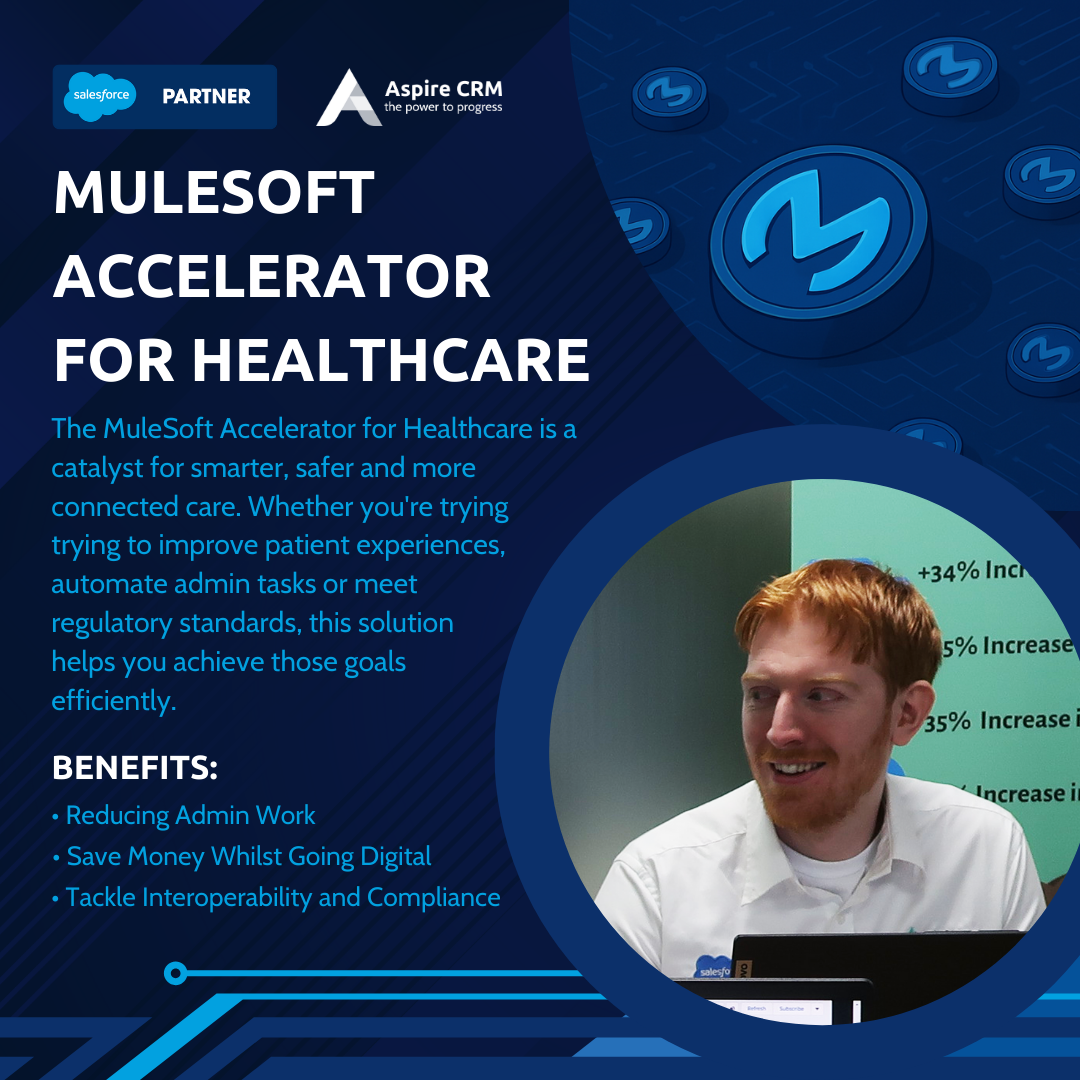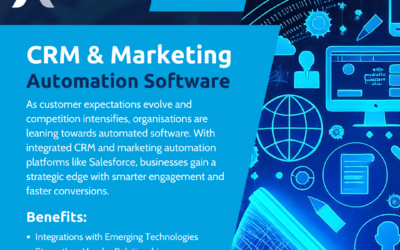
Healthcare providers are looking for modern solutions to modernise how they manage patient data, meet complex regulations and improve care quality — all while reducing costs. One of the biggest challenges is connecting the many different IT systems that hospitals and clinics use every day. That’s where the MuleSoft Accelerator for Healthcare comes in.
Whether you’re a healthcare administrator, IT manager or clinical leader, this powerful solution can help you make sense of your data and systems without needing deep technical knowledge. It’s designed to support Mulesoft healthcare initiatives and streamline Mulesoft’s digital transformation efforts across the board.
1. Interoperability and Compliance
In healthcare, “interoperability” means making sure all the different software systems can talk to each other and share patient data securely. It’s a major challenge because hospitals, insurance providers, and government agencies often use completely different platforms.
The MuleSoft Accelerator for Healthcare provides pre-built APIs and templates that make it much easier to connect these systems. Even better, it helps you comply with strict government rules like the UK Interoperability Standards mandated by NHS England and ensures alignment with NHS Digital’s Data Security and Protection Toolkit (DSPT). These regulations are designed to ensure that patients have safe and secure access to their health data, no matter where that data is held.
The Accelerator supports important data standards like HL7 v2 and FHIR R4, which are the languages that healthcare systems use to communicate. This allows for data exchange between older systems and newer platforms — a huge step forward for MuleSoft healthcare integration and MuleSoft digital transformation in the industry.
2. A Complete View of the Patient with EHR Integration
Having all of a patient’s medical information in one place is essential for providing the best care. But this data is often scattered across different Electronic Health Record (EHR) systems, making it hard to access quickly. The MuleSoft Accelerator for Healthcare solves this problem by connecting EHR systems with platforms like Salesforce Health Cloud.
This integration brings together important data like demographics, clinical notes, medications, and more into one easy-to-use dashboard. This is commonly called a Patient 360 view, and it allows healthcare providers to see the full picture of a patient’s health.
This level of data unification helps doctors make faster, more accurate decisions and empowers patients to be more involved in their own care — a clear win for a healthcare organisation using a MuleSoft digital transformation.
3. Real-World Use Cases
The true power of the MuleSoft Accelerator for Healthcare comes to life when you see how it helps with everyday healthcare processes. Let’s look at some practical examples:
• Appointment Scheduling: With ready-to-use APIs, clinics can integrate appointment booking into their systems, reducing errors and improving convenience for patients.
• Benefits and Eligibility Verification: Patients and providers can instantly check insurance coverage details, speeding up the treatment process.
• Prior Authorisation: This time-consuming step can be automated, helping doctors and insurance companies approve treatments faster.
• Population Health Management: The Accelerator helps collect and analyse data for public health programs, such as identifying at-risk patients during flu season or tracking chronic disease trends.
These scenarios show how Mulesoft’s healthcare solutions improve real-world operations and support Mulesoft’s digital transformation goals.
4. Data Format Converters
Not all healthcare systems speak the same language. One hospital may use HL7 v2, another may use FHIR, and others may rely on older document formats like C-CDA. This diversity creates confusion and slows down care. Thankfully, the MuleSoft Accelerator for Healthcare includes format converters that automatically translate data from one format to another. For example, it can convert an HL7 message into a modern FHIR format so that newer applications can understand and use it.
This process, known as data standardisation, ensures that healthcare professionals always have consistent, accurate information. It’s a foundational part of any MuleSoft healthcare strategy and helps accelerate MuleSoft’s digital transformation by removing roadblocks to integration.
5. How It Improves the Patient Experience
Technology should make life easier — not just for healthcare providers, but for patients too. By connecting EHRs and simplifying data access, the Accelerator helps reduce long wait times and prevents duplicate paperwork. Patients can spend less time filling out forms and more time receiving care.
For example, a patient arriving at a clinic might have their insurance pre-verified and an appointment scheduled in advance, all thanks to backend automation powered by MuleSoft. Doctors can review the patient’s complete history before the appointment, enabling more personalised and efficient care.
This kind of real-world improvement is a key reason why so many organisations are investing in a MuleSoft digital transformation and adopting the MuleSoft Accelerator for Healthcare.
6. Reducing Admin Work Through Automation
Administrative tasks are a huge drain on healthcare resources. Staff often spend hours managing appointments, verifying insurance, and transferring records. The MuleSoft Accelerator for Healthcare helps automate these repetitive tasks through simple tools and pre-configured APIs. This not only saves time but also reduces the risk of human error. Administrative teams can then focus on more meaningful work — like helping patients or improving care programmes.
7. Supporting New Technologies
Modern healthcare is moving beyond hospital walls. Devices like fitness trackers, smartwatches, and home monitoring systems are becoming part of daily care. Telemedicine platforms are also allowing doctors to see patients remotely. The MuleSoft Accelerator for Healthcare can integrate with these emerging technologies, making it easier to collect and use real-time patient data from wearable devices or virtual visits. This helps doctors monitor patients continuously and respond faster when needed.
By bridging traditional systems with cutting-edge tools, the Accelerator ensures your MuleSoft healthcare setup is future-ready and aligned with ongoing MuleSoft digital transformation efforts.
8. Making Compliance Less Complicated
Healthcare organisations face strict data privacy and security laws. Meeting these regulations can be difficult, especially when dealing with multiple disconnected systems. The MuleSoft Accelerator for Healthcare simplifies compliance by offering pre-built templates that align with regulatory standards, such as those from the Centres for Medicare & Medicaid Services (CMS). These templates make it easier to share data while staying within the law. This not only protects patient information but also reduces the burden on your IT and legal teams.
9. Saving Money While Going Digital
Lastly, the MuleSoft Accelerator for Healthcare offers a clear return on investment. By reducing manual processes, avoiding redundant work, and improving system efficiencies, healthcare organisations can cut costs significantly.
From fewer data errors to faster approvals and better patient outcomes, the savings add up quickly. It’s a powerful argument for embracing MuleSoft’s digital transformation — not just for technical progress, but also for financial sustainability in the MuleSoft healthcare sector.
Final Thoughts
The MuleSoft Accelerator for Healthcare is a catalyst for smarter, safer, and more connected care. Whether you’re trying to improve patient experiences, automate admin tasks, or meet regulatory standards, this solution helps you achieve those goals efficiently.
At Aspire CRM, we specialise in helping healthcare organisations connect their systems using MuleSoft, build intelligent Patient 360 dashboards in Salesforce Health Cloud, automate processes like insurance verification and appointment scheduling, and ensure data flows securely and compliantly across platforms. Our team knows how to bring these technologies together in a way that works for clinicians, administrators, and patients.
If you’re exploring how to get started with the MuleSoft Accelerator or want to improve existing integrations, Aspire CRM can help. We offer full support from planning and design through to hands-on implementation and long-term optimisation. Together, we can turn your goals for MuleSoft healthcare and MuleSoft digital transformation into a reality that delivers better care and better outcomes.




